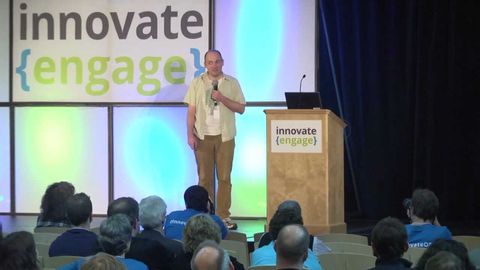2013年俄亥俄州立大學的創新。Jim Fowler的MOOCulus Steal My Idea演講 (Innovate 2013 at Ohio State: Jim Fowler's MOOCulus Steal My Idea Presentation)
万事 屋大ととく 發佈於 2021 年 01 月 14 日  沒有此條件下的單字
沒有此條件下的單字US /ɪkˈspɪriəns/
・
UK /ɪk'spɪərɪəns/
- n. (c.)經驗;(學到東西的)經驗;經驗;經歷
- n. (c./u.)經驗;經歷;工作經驗
- v.t./i.經歷;體驗
US /ˈrændəm/
・
UK /'rændəm/
- n. (c./u.)要點;一小點;斑點;重點;特點;點(字符的大小);時刻;瞬間;地點;意義;得分;削尖;點 (小數點);針腳
- v.i.朝向
- v.t.指向
- v.t./i.表明
US /ˈsɪstəm/
・
UK /'sɪstəm/
- n. (c./u.)系統;體系;方法;(身體)系統;(電腦)系統
- adj.系統

